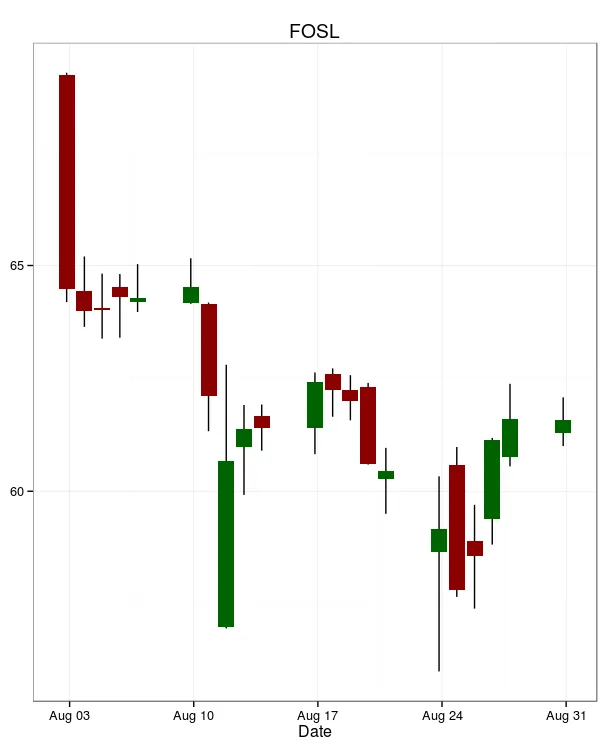我正在使用geom_boxplot来使用股票市场数据绘制蜡烛图。问题在于,个别箱线图的上下边缘以及上须端点显示在y轴上比相应值高得多。但每个箱线图的相对高度(上下边缘之间的差异)和下须的末端点都很好。这是我的代码:
candlestickPlot <- function(x){
library("ggplot2")
# x is a data.frame with columns 'date','open','high','low','close'
x$candleLower <- pmin(x$open, x$close)
x$candleUpper <- pmax(x$open, x$close)
x$candleMiddle <- NA
x$fill <- "red"
x$fill[x$open < x$close] = "green"
# Draw the candlesticks
g <- ggplot(x, aes(x=date, lower=candleLower, middle=candleMiddle, upper=candleUpper, ymin=low, ymax=high))
g <- g + geom_boxplot(stat='identity', aes(group=date, fill=fill))
g
}
这里是 x:
date close volume open high low
5 2013-12-30 25.82 3525026 27.30 27.76 25.7
4 2013-12-31 27.41 5487204 25.25 27.70 25.25
3 2014-01-02 30.70 7835374 29.25 31.24 29.21
2 2014-01-03 30.12 4577278 31.49 31.80 30.08
1 2014-01-06 30.65 4042724 30.89 31.88 30.37
我这里做错了什么吗?
